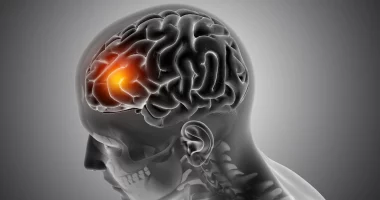Anemia happens when the body doesn’t have enough red blood cells to carry oxygen. This makes a person feel weak or tired.
In the United States, about 3 million people have some form of anemia.
Other health problems can cause anemia too. These problems might stop the body from making enough healthy red blood cells or make them break down too fast. Anemia can make people feel tired, breathless, or dizzy.
Symptoms
Anemia often shows itself through various symptoms, with fatigue being the most prevalent. Alongside fatigue, individuals might notice a pallid complexion, a heartbeat that’s either rapid or irregular, shortness of breath, headaches, chest pain, or feelings of lightheadedness. These symptoms can vary greatly from person to person. While some individuals with mild anemia may hardly notice any symptoms at all, others might experience several of these indicators.
Types
Anemia comes in various forms, each with its own set of symptoms. Some common types include iron deficiency anemia, vitamin B12 deficiency anemia, aplastic anemia, and hemolytic anemia.
Iron deficiency anemia
Iron deficiency anemia is the most widespread form and occurs when the body doesn’t have enough iron to produce an adequate number of red blood cells. This shortage of iron may result from factors like a diet lacking in iron-rich foods, heavy menstrual periods, frequent blood donations, intense endurance training, digestive disorders like Crohn’s disease, or the use of medications like ibuprofen that irritate the inner line of the gut. Symptoms of iron deficiency anemia include fatigue, lightheadedness, and cold extremities.
Vitamin B12 deficiency
Vitamin B12 deficiency anemia arises when the body doesn’t absorb or consume enough vitamin B12, which is crucial for red blood cell production. Symptoms may manifest as difficulty walking, confusion, vision problems, diarrhea, or glossitis (inflammation of the tongue).
Aplastic anemia
Aplastic anemia, though rare, occurs when the bone marrow fails to generate enough new red blood cells. It’s often linked to autoimmune diseases that harm stem cells, leading to low red blood cell counts despite normal iron levels. Symptoms include frequent infections, fatigue, skin rashes, and easy bruising.
Hemolytic anemia
Hemolytic anemia arises when red blood cells are destroyed faster than they can be replaced. This can be due to infections, autoimmune disorders, bone marrow issues, or inherited conditions like sickle cell disease and thalassemia. Symptoms may include weakness, fever, dizziness, jaundice, dark urine, and abdominal pain.
Causes
The body relies on red blood cells (RBCs) to survive because they carry hemoglobin, a complex protein that binds to iron molecules. Hemoglobin helps transport oxygen from the lungs to all parts of the body. When RBC levels drop, it can lead to anemia, which can stem from various health conditions.
Anemia comes in many forms, and often, there’s no single cause for it. Sometimes, pinpointing why RBC counts are low can be challenging. However, there are three main culprits behind anemia:
Blood loss
Blood loss is a significant contributor, particularly to iron deficiency anemia, the most prevalent type. When the body loses blood, it pulls water from tissues outside the bloodstream to maintain blood vessel volume, diluting the blood and reducing RBC counts. Blood loss can occur suddenly, such as during surgery or trauma, or chronically over time, often due to conditions like endometriosis, stomach ulcers, tumors, or cancer. Other sources of blood loss contributing to anemia include gastrointestinal issues like hemorrhoids, gastritis, or cancer, as well as the use of medications like ibuprofen and aspirin, and heavy menstrual bleeding.
Decreased or Impaired RBCs
The bone marrow, located in the center of bones, is crucial for producing red blood cells (RBCs), white blood cells, and platelets. Stem cells in the marrow develop into these blood components. However, certain diseases can affect the bone marrow, disrupting RBC production.
- Leukemia: This type of cancer causes excessive and abnormal white blood cell production, which can interfere with RBC production, leading to anemia.
- Aplastic Anemia: This condition occurs when the bone marrow does not have many or no stem cells, hindering RBC production.
- Thalassemia: In this hereditary anemia, RBCs don’t develop and mature properly, further reducing their effectiveness.
Destruction of RBCs
Normally, RBCs live for about 120 days before the body removes them from the bloodstream. However, in some cases, RBCs are destroyed prematurely, causing anemia.
Autoimmune Hemolytic Anemia is the condition that arises when the immune system mistakenly identifies RBCs as foreign invaders and triggers them, leading to their destruction.
Treatment
Treatment for anemia involves various approaches aimed at increasing the number of red blood cells (RBCs) in the body, which helps improve oxygen levels in the blood.
The type of treatment needed depends on the specific type of anemia a person has:
- Iron-deficiency anemia: This common type of anemia often responds well to dietary changes and iron supplements. Doctors also work to address any underlying causes of excessive bleeding.
- Vitamin deficiency anemia: Treatment may involve taking dietary supplements or receiving vitamin B12 injections to replenish the body’s vitamin levels.
- Thalassemia: Management may include taking folic acid supplements, iron chelation therapy, and, in some cases, undergoing bone marrow transplants or blood transfusions
- Anemia due to chronic disease: Doctors primarily focus on treating the underlying health condition responsible for the anemia.
- Aplastic anemia: Treatment typically involves receiving blood transfusions or undergoing bone marrow transplants to restore healthy blood cell production.
- Sickle cell anemia: Doctors may use oxygen therapy, pain relief treatments, and intravenous fluids to manage symptoms. Additional treatments might include antibiotics, blood transfusions, folic acid supplements, and the medication hydroxyurea.
- Hemolytic anemia: Treatment may include medications to suppress the immune system, treatments for infections, and a procedure called plasmapheresis, which filters the blood to remove harmful substances.
Diet
Diet plays a crucial role in managing anemia caused by nutritional deficiencies. Increasing the intake of iron-rich foods can help replenish iron levels in the body. Some foods that are excellent sources of iron include iron-fortified bread and cereals, leafy green vegetables like spinach, kale, and watercress, various pulses and beans, brown rice, meats such as white or red meats, nuts, seeds, tofu, fish, eggs, and dried fruits like raisins, apricots, and prunes. Incorporating these foods into your diet can be beneficial for managing anemia caused by iron deficiency.
Risk factors
Certain factors can increase the chances of someone developing anemia, regardless of their age, gender, or ethnicity. These risk factors include:
- Premature Birth: Babies born prematurely have a higher risk of developing anemia.
- Age 6–24 Months: Children between the ages of 6 and 24 months are more susceptible to anemia.
- Menstruation: Women who have their periods are at risk of anemia due to blood loss.
- Pregnancy and Childbirth: Pregnant women and those who have recently given birth are more likely to develop anemia.
- Poor Diet: Consuming a diet that lacks essential iron, vitamins, and minerals increases the risk of anemia.
- Medications: Taking medications that irritate the stomach lining, such as NSAIDs (nonsteroidal anti-inflammatory drugs), can contribute to anemia.
- Family History: Having a family history of inherited anemia can increase one’s risk.
- Intestinal Disorders: Conditions that affect the absorption of nutrients in the intestines can lead to anemia.
- Blood Loss: Any situation or condition that results in significant blood loss can cause anemia.
- Chronic Illness: Diseases like diabetes, AIDS, kidney disease, heart failure, cancer, rheumatoid arthritis, or liver disease can also increase the risk of developing anemia.
Diagnosis
Diagnosing anemia usually involves a simple blood test called a complete blood count (CBC). This test checks different parts of the blood, like:
- Hematocrit Levels: This measures the proportion of red blood cells in the blood compared to the total blood volume.
- Hemoglobin Levels: Hemoglobin is a protein in red blood cells that carries oxygen.
- Red Blood Cell Count: This counts the number of red blood cells present.
A CBC can give doctors a good idea about a person’s complete health. It also helps them decide if they need to look for other problems like kidney disease or leukemia.
If the levels of red blood cells, hematocrit, and hemoglobin, are lower than usual, it often means the person has some type of anemia.
However, sometimes even healthy people can have levels outside the normal range. So while a CBC is a helpful starting point, it’s not the only thing doctors look at to diagnose anemia accurately.
Summary
Understanding anemia, its causes, symptoms, and treatments is essential for managing this condition effectively. From identifying risk factors to diagnosing through blood tests like CBCs, each step plays a vital role.
Treatment options, including dietary changes and medications, aim to boost red blood cell production and alleviate symptoms. Regular monitoring and addressing underlying health conditions are crucial for long-term management. With proper care and awareness, individuals with anemia can lead fulfilling lives and minimize its impact on their well-being. Collaboration between patients and healthcare providers is key to achieving optimal outcomes and improving quality of life.









